Description and characteristics of the best varieties of sweet peppers
If earlier pepper was grown only in warm countries, now the culture has spread throughout the world, even in areas with a cold climate. A vegetable of both yellow and red color is useful for the human body. And preparations for the winter do not go through without using the best varieties of sweet peppers. Before planting a vegetable, you need to choose the types of crops that mature in a specific climatic zone. To grow bell peppers, you need to create comfortable conditions with high air temperatures, abundant watering, and top dressing.
Outdoor hybrids
The early types of sweet vegetables are suitable for areas with warm climates and long summers, where they can be placed in open ground as seedlings in May.
Meet the Big family
The seeds of the Big pepper, bred by Russian breeders, have appeared recently. Translated from English, representatives of the family are called big. They have a Big Daddy with a purple fruit color. The Big Mama pepper is with fleshy oranges, and the Big Boy is dark red. In the family there is also a girl - Big Girl pepper, which bears fruits of a rectangular shape, orange with a brownish tint. The benefits of orange fruits are high in beta-carotene, which is converted in the human body into vitamin A. Vitamin has a positive effect on the condition of blood vessels, and potassium - on the function of the heart muscle. In addition to the sweet taste, they have thick walls, up to seven millimeters. They note the resistance of plants to diseases, good yield, reaching six to seven kilograms per square meter.
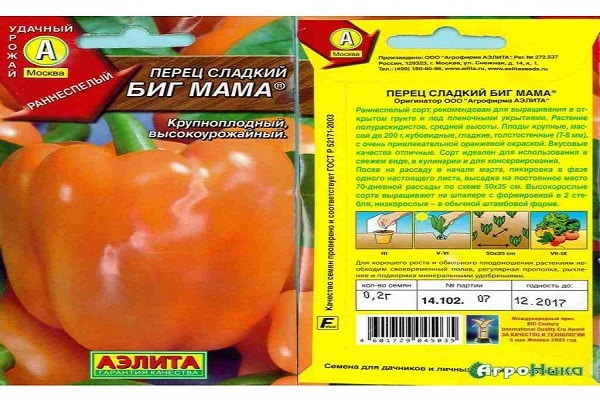
Admiral's varieties
Hybrid pepper Admiral F1 produces fruits weighing over one hundred and fifty grams after 105 days. The original color of the vegetable is from green to red with white stripes. The height of a vegetable bush reaches one meter or more.
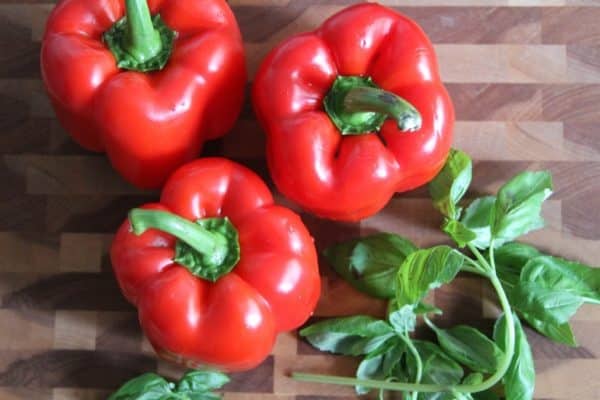
Pepper Admiral Ushakov reaches maturity in 112-130 days. The cuboid fruits of a bright red color reach a weight of two to three hundred grams. And their thick walls are juicy and tasty.
Mid-season pepper Admiral Nakhimov has thick walls, bright taste. Fruits weighing three hundred grams or more of a rich red tone, juicy. Features of the variety in its resistance to viral and fungal infections.

About the best varieties for 2018
Choosing early varieties of vegetables means getting a harvest of healthy fruits in early August. The best varieties of pepper for 2018 for open ground are presented by hybrids:
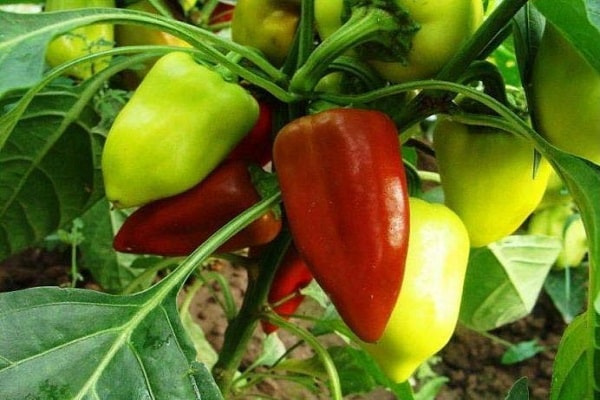
- Swallow. The amicable ripening can be distinguished in the advantages of the variety. Harvest when the cone-shaped fruits reach biological maturity, turn green. An early look is suitable for pickling, making winter salads.
- Merchant.Peppers similar to pyramids reach a weight of no more than one hundred grams. It is convenient to harvest them whole for the winter. The blanks are aromatic and tasty.
- Atlant. The hybrid produces three-chambered fruits with dense fleshy walls. Harvested 110 days after germination. Up to five kilograms of vegetables are obtained from one square meter.
- Topolin pepper. On compact bushes 70 centimeters high, cone-shaped fruits of a salad tone appear after 110-120 days. Their walls are no more than five millimeters thick. You can get up to five kilograms of fruit per square meter.
- Pepper Flight. The variety is interesting for the compactness of the bush, the height of which is less than fifty centimeters. At the same time, you can get from one square meter to ten kilograms of dark red fragrant fruits. The hybrid is convenient for growing in small areas.
- Variety Belozerka. Reviews of the hybrid are only positive. They note the high yield of the vegetable, the weak ribbing of its fruits with a pulp thickness of seven millimeters. A vegetable crop retains its qualities for a long time during storage and transportation. Pepper Kirill has similar characteristics.
- The red miracle pepper belongs to the average types of vegetables in terms of ripening. On semi-spreading bushes, 120 days after germination, tetrahedral red fruits appear. They have a sweet taste without bitterness. They are best used for stuffing, but they are also good fresh. The variety is not afraid of sudden changes in temperature.
- One of the common varieties is Grandma's Pepper. Medium-sized bushes of the plant are strewn with green, yellowish and red fruits. Small in weight, they are thick-walled, which allows you to feast on them in salads, sliced.
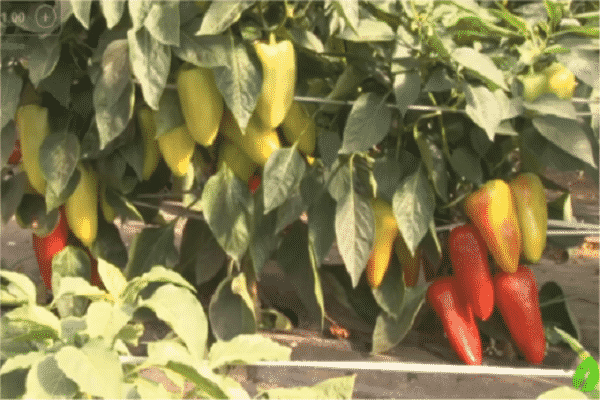
Pepper varieties for open ground are selected taking into account the climate, weather conditions of the growing region. Before buying seeds, the characteristics and description of the vegetable plant variety are carefully studied.
Which varieties are best for greenhouses
All varieties of bell peppers are suitable for planting both outdoors and in greenhouses. But if the climate is cold, and you want to get the harvest early, then it is better to plant a vegetable crop under film coatings. And then the most common plants are chosen.
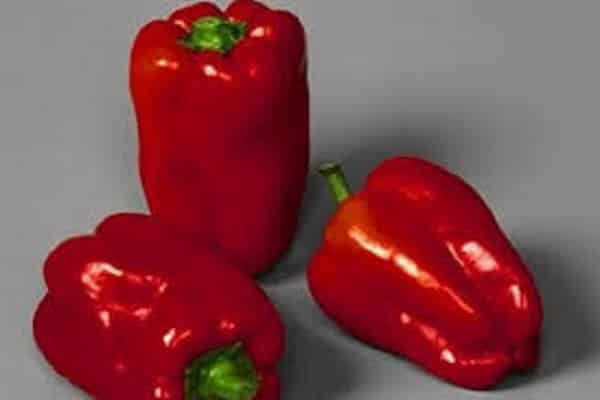
It is known about Morozko pepper that it was created by breeders of Siberia, therefore it is an ideal option for greenhouse soil. The main difference between Morozko pepper is:
- the average height of the bush is up to eighty centimeters;
- thick juicy walls of seven millimeters;
- convenient shape of the fruit in the form of a pyramid;
- high vitamin C content;
- amicable maturation.

The use of Morozko pepper is universal: it is also good in winter preparations, fresh vegetable dishes. A vegetable plant is grown in the same way as other varieties, by seedling. With Morozko pepper they are not afraid to be left without tasty aromatic fruits, preparations for the winter.
Summer residents should not ignore the Pharaoh pepper with excellent taste. And there are few nests in the fruits, and in shape it is convenient for stuffing. And in the greenhouse, harvests of yellow and red peppers are obtained 65 days after planting the seedlings.

Flamingo pepper pleases with super early fruits. The hybrid was bred by French breeders, so it is better to grow it under film. High productivity of the variety - up to three kilograms per bush. The variety tolerates drought well, being protected by wide leaves. Dense fruits can easily be transported and stored for a long time.

The heavily leafy bush of the Lydia hybrid is no more than sixty centimeters high. With a compact plant, the characteristics of the fruit are surprising. The description of the variety includes, along with the smoothness of the cone-shaped fruit, a weight of one hundred grams, aroma and excellent taste of the pulp. They are high in sugar, ascorbic acid. And the yield of a vegetable is up to ten kilograms per square meter.
The Lydia hybrid bears fruit better in greenhouse soil.
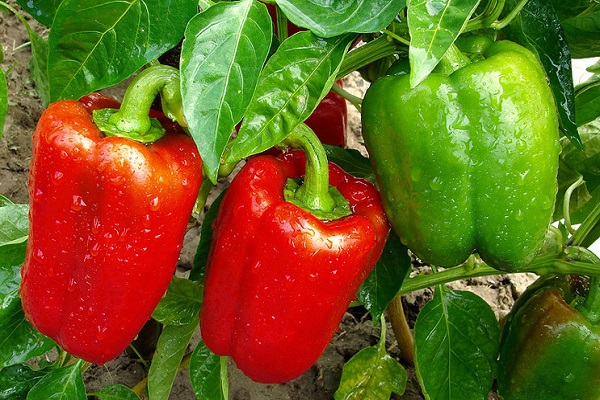
Under the film, the Prince of Silver variety lives comfortably, its bush is compact, reaches a height of less than half a meter. Aligned smooth fruits are universal. Due to their small size, they are suitable for pickling.
Of the mid-early hybrids, he uses Fisht F1 for planting, a pepper that bears fruit 110 days after germination. Ideal fruits of the variety:

- weighing seventy - one hundred grams;
- wall thickness of five millimeters;
- rich red color.
And the hybrid gives a good harvest - an average of five kilograms per square meter.
To get high-quality sweet peppers in greenhouses, you must follow the rules for planting and growing vegetables.

Large-fruited hybrids
The hot and humid regions of the American continent are home to sweet peppers. It was brought to European countries after the discovery of America. We got a vegetable from Bulgaria, which is why they call sweet types of bell peppers. The pulp, juicy and aromatic, is appreciated in vegetables. The larger the fruits, the thicker their walls, the more useful substances they contain. Giant varieties want to grow summer residents to enjoy the sweet pulp of the fruit.
One of the interesting hybrids of the vegetable plant is the Siberian Bonus pepper with orange fruits similar to oranges. Up to fifteen cubic-shaped peppers are harvested from one bush. And it is good in weight - up to three hundred grams with a wall thickness of a centimeter.
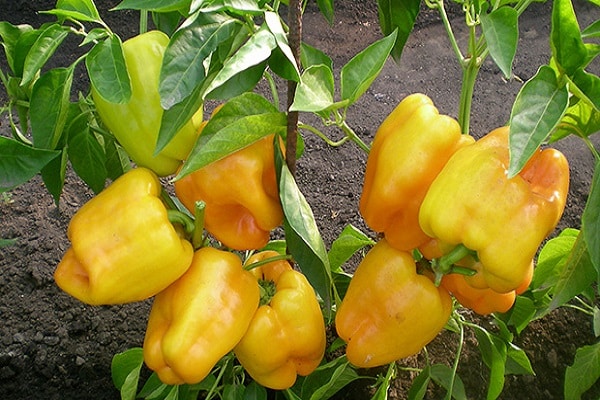
The hybrid feels great in open and closed ground, giving up to three kilograms of fruit from one bush.
It is known about the Red Giant pepper that its bush is 120 centimeters high, and its almost square dark red fruits are larger than average. Their weight is three hundred grams, and the thickness of the walls is one centimeter.

Pepper Prince Igor yields in greenhouses two to three times more than in the open air. The ripe fruits of the hybrid have a dark red color, suitable for processing into sauces, lecho. It is useful to eat vegetables with a pulp nine millimeters thick, they contain more sugar and vitamins.

Lesya belongs to the early maturing peppers, and the fruits give large heart-shaped. Their pulp is hidden in the centimeter thickness of the walls - juicy, sweet. But the size of the peppers is small, barely reaching 170 grams.

The name of the Goliath variety speaks for itself. The fruits of the vegetable are the largest. The stem has to be tied up so that it does not break under the weight of their mass of three or four hundred grams. The Goliath hybrid can be a decoration of the site and please with a high yield.

Pepper Goby is one of the most popular mid-season vegetable species. Orange fruits on half-meter bushes will decorate the garden. Cuboid thick-walled, they have a pleasant aroma. It is convenient to cut them into salads, stuff them. And there are not so many seeds in the nests. The goby pepper yields good crops - up to five kilograms and more.
Similar to the trunk of an elephant, slightly curved fruits of the Mammoth Tusk variety. The length of the fruit reaches 27 millimeters and weighs two hundred grams. The variety is prized for its sweetness and juiciness.

Sweet pepper varieties are diverse. Summer residents choose not only proven ones, but also discover new ones every year.
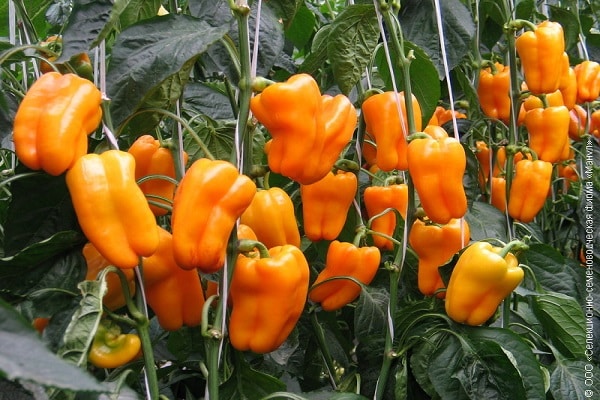
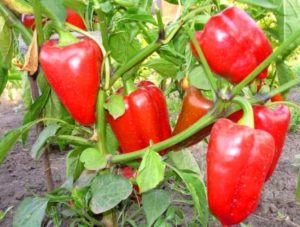
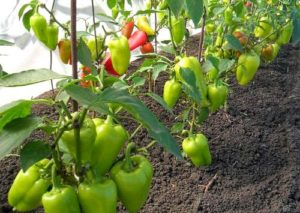



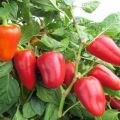
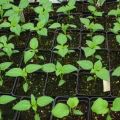
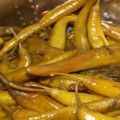
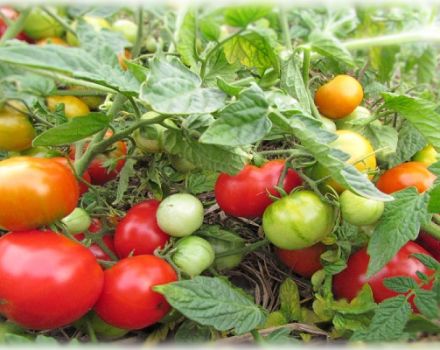

I prefer to grow large-fruited peppers (Goby, Goliath, etc.). They are good both for food and for preparations for the winter. Especially successful harvests began to be obtained after I discovered a growth activator for myself BioGrow.